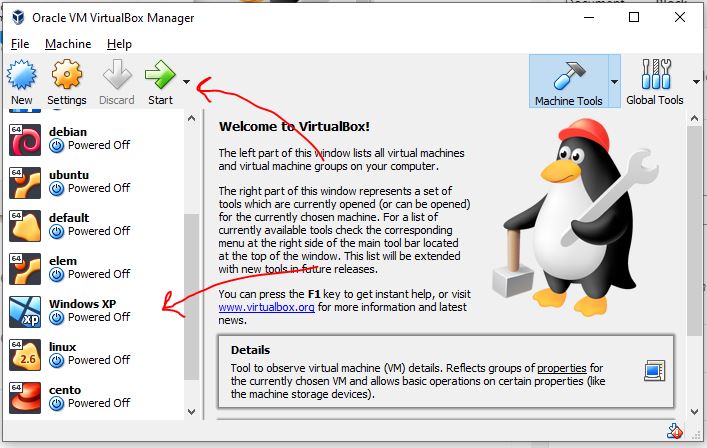
You can use the suggested number in my case, for a 32-bit Windows XP VM, the recommended RAM is 192MB, but I increased that to a more realistic 512MB. You will also need to allocate some of your host system's RAM (memory) to the VM. In the first dialog, you need to enter the name of your new virtual machine.įrom the Type drop-down menu, select Windows XP (32-bit)


Open a terminal window and refer to Figure 1 to install VirtualBox.įigure 1: Installing VirtualBox via the command line on Ubuntu Linux.Īfter installation completes, you launch VirtualBox by searching for it in your Unity menu or at the command line with: $ virtualbox & You can download and install VirtualBox or, if your distribution has a prebuilt package, you can install directly from the command line.

For the virtualization application, I use VirtualBox because it is easy to install, and it's available for Windows, Mac OS X, as well as the various Linux distributions. In the previous issue, I described how to set up a dual-boot Linux/Windows XP system that has Windows XP already installed.įor this article, I use Ubuntu 14.04 for the existing Linux system, and I use Windows XP SP3 for the Windows existing system and the Windows VM. This article describes how to set up a Windows XP virtual machine on your existing Linux system. However, if your system has Windows XP installed on it, you can more easily set up a dual-boot Linux/Windows XP. Running Windows XP in a virtual machine (VM) on your Linux laptop is a better solution than either reimaging your Linux system with XP or attempting the often precarious task of setting up a Linux/Windows XP dual-boot system next to an existing Linux installation. If you find yourself needing to run Windows applications, especially Windows legacy applications on Windows XP, there is a solution: virtualization.

Your Linux laptop can do a lot of things, but it cannot fully emulate Windows nor can it run many essential Windows programs.


 0 kommentar(er)
0 kommentar(er)
